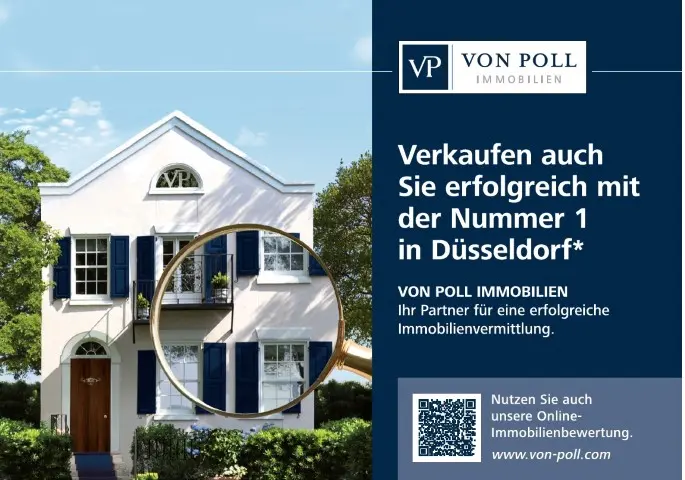Rents in the major cities are rising rapidly
08/02/2024 · Autor: Marius Grumbt
The increased demand for housing, stagnating new construction and tenants caught in a cost trap have significantly increased the pressure on the housing market in major German cities. According to an analysis by real estate specialist Jones Lang LaSalle (JLL), asking rents in Berlin, Hamburg, Munich, Cologne, Frankfurt, Düsseldorf, Stuttgart and Leipzig rose by an average of 8.2 percent in the second half of 2023 compared to the same period of the previous year. This increase was significantly higher than in the previous year (6.3%) and on average over a five-year period (5%). The experts do not predict that the situation will ease any time soon.
The study was based on the evaluation of around 35,000 rental and 41,000 purchase advertisements for new and existing buildings. It is important to note that asking rents do not necessarily correspond to concluded rental agreements. Occasionally, the agreed rent may differ from the values stated in the advertisements, although this is less common than when buying a property.
Rents outside the major cities are rising less rapidly
The increase in asking rents was comparatively more moderate outside the major cities. The increase was particularly significant in Berlin and Leipzig, with double-digit percentage rates, with JLL recording a remarkable increase of over 21% in the capital. In contrast, the increases in other metropolitan areas were lower, with rates of between 5 and 7 percent. Experts have observed a continuous rise in rents in Berlin over a longer period of time and attribute this to the high level of immigration. With an average advertised rent of 19.42 euros per square meter per month, the capital is now approaching Munich (22.50 euros) as the most expensive German city, according to JLL.
Overall, the dynamic was more pronounced in the metropolitan areas than in independent cities, where asking rents rose by 4.8 percent within twelve months. In the rural districts, they rose by 5.5 percent.
In view of the existing housing shortage, the increase does not appear surprising, as author Sören Gröbel emphasized. This leads to a growing gap between existing and new rents, which discourages tenants from moving. A vicious circle is developing, as a stronger increase in rents reduces the number of advertised rental offers and further exacerbates the already tense situation on the housing markets.
The pressure on the housing market is intensifying further as new construction is in crisis due to increased interest rates and material prices. The German government is well below its target of 400,000 new homes per year. The Ifo Institute forecasts that only 225,000 apartments will be completed in 2024, compared to an estimated 270,000 in the previous year. According to Sören Gröbel, there is a surplus of demand on the rental markets in particular. 'As a result, asking rents are expected to rise further.'
The decline in real estate prices continues
The JLL analysis shows that the decline in purchase prices for apartments has accelerated. In the second half of the year, asking prices for new builds and existing apartments in major cities fell by an average of 7.4 percent compared to the same period last year. A year earlier, the decline amounted to 1.6 percent. Most recently, prices for existing properties fell by 8.1 percent, a sharper decline than for new-build apartments (2.3 percent). It is important to note that asking prices do not provide an accurate indication of the actual purchase price, as negotiations between buyers and sellers are common.
According to JLL, the current low transaction figures on the real estate market indicate that the price expectations of buyers and sellers continue to diverge considerably. In view of the rise in lending rates, the ratio of rental to purchase costs remains skewed in favor of tenants overall. According to JLL, this is likely to lead to an additional surge in demand on the rental housing markets for some time to come.
Source: SZ online
Kaiserstraße 50
40479 Düsseldorf
| Tel. | +49 211 - 86 32 38 0 |
| [email protected] |
| Current real estate offers |
| Opening hours |
| Monday | 10:00 - 18:00 |
| Tuesday | 10:00 - 18:00 |
| Wednesday | 10:00 - 18:00 |
| Thursday | 10:00 - 18:00 |
| Friday | 10:00 - 18:00 |
| Contact |
|
Brakonier & Grumbt Immobilien GmbH & Co. KG, represented by the personally liable partner Brakonier & Grumbt Immobilien GmbH, which in turn is represented by the managing directors Claudia Brakonier (Real Estate Specialist (TÜV), Certified Independent Expert for Real Estate Valuation (PersCert®)) and Marius Grumbt (Certified Independent Expert for Real Estate Valuation (PersCert®)) Kaiserstraße 50, 40479 Düsseldorf In free agency for von Poll Immobilien GmbH Local court Düsseldorf, HRA 22401 Personally liable partner of Brakonier & Grumbt Immobilien GmbH & Co. KG: Brakonier & Grumbt Immobilien GmbH Trade license according to §34c GewO issued by the state capital Düsseldorf UID: DE 814 789 513 |
| Route |
| Job Offers |

To the job advertisements
| BEST LIVING |

Go to Magazine
| Market Reports |

To the market report
| Image Film |


Stand out from the crowd when selling with professional real estate videos. Whether video, reel or short, we put your property in the best light on the Internet!
Watch image film

